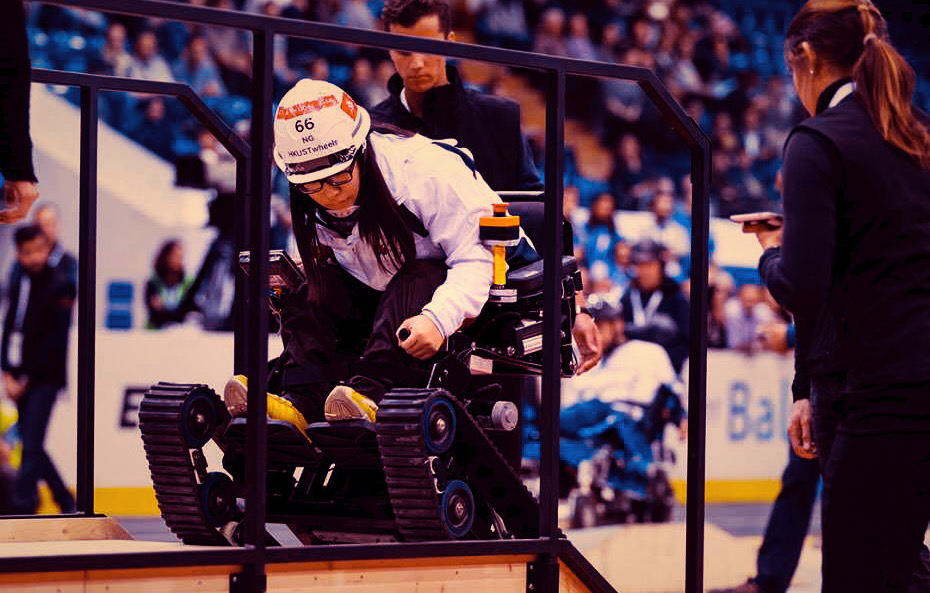If you met a transhumanist at a bar, then it’s probably a conversation you’d try to get out of. Not because they were talking crazily. Rather, because your visceral reaction is like vinegar and water. Who would want to upload their consciousness to silicon? Why should we trust Artificial Intelligence to merge with the human form?
These are the narratives that come to mind when we hear transhumanism. However, that’s only a sliver of that ideology. And it’s the really far-fetched sliver.
Transhumanism is the belief or theory that the human race can evolve beyond its current physical and mental limitations, especially by means of science and technology. In that sense, we’re all practicing transhumanists.
Every time you’re at a coffee shop, in a doctor’s waiting room, or some other space where there are other people just as idle as you are and you pick up your cell phone instead of chatting with a stranger, you’re choosing the cyborg lifestyle. You’re choosing the technology augmentation over the natural.
Yet, when transhumanism pops up in the mainstream media, the narratives propose frightening scenarios and then abruptly abandon you in this abyss.
Realistically, on a scale from Morse Code to FaceTime, we’re much closer to Morse Code on the spectrum of transhuman, cyborg living.
And already we’re seeing miraculous, positive advances.
The Quad Gods
As if the massively popular eSports industry weren’t already an anomaly, there’s an even greater story bubbling up. A group of quadriplegic gamers known as the Quad Gods.
Chris Scott, paralyzed from the shoulders down during a horrific skydiving accident, and David Putrino, scientist pioneering video game and VR therapies, had the idea of hooking Scott’s QuadStick up to a PS4 controller. (The QuadStick is the mouth-controlled joystick that quadriplegics use to control a wheelchair.)
He [Scott] loaded up NBA 2K and challenged Putrino to a match. “He proceeds to just kick my ass,” says Putrino. “Like properly. I’m not talking a little bit, like an embarrassing pantsing.”
CNET
Lightbulbs went off and the two put plans in motion to start a competitive eSports team entirely of quadriplegics: The Quad Gods. It’s a team of eight that are dedicated to not only competing but also pushing the boundaries of “gamified rehab”.
Players with physical disabilities aren’t necessarily front of mind for video game manufacturers. In the past, players with disabilities would have to jury-rig custom controllers and hold fast for developers to include thoughtful accessibility settings.
CNET
Perhaps the most high-profile push for increasing accessibility came in the form of the Xbox Adaptive Controller, released in 2018. The endlessly customizable kit, which Microsoft developed in collaboration with disability advocate groups, allows players to link up their own switches, tubes, sticks and buttons, accommodating users with a vast array of physical limitations.
With the right tools, the right training regimen lead by Putrino’s belief in neuroplasticity, and the right team, the Quad Gods will be gunning for a championship in eSports very soon.
Cybathlon 2020
Every four years we can expect the Olympics to present us with a great show. We anxiously anticipate seeing the world’s best athletes redefine what we believe is humanly possible.
The same goes for the Cyborg Olympics, better known as the Cybathlon.
The Cybathlon happens every four years, with the next one occurring in May of 2020. It’s an event where the world’s premiere designers of prosthetics and prosthetic athletes convene to test their technology and user’s abilities against one another.
The events of the 2020 Cybathlon include:
- Brain-Computer Interface Race
- Powered Arm Prosthesis Race
- Powered Leg Prosthesis Race
- Powered Wheelchair Race
- Powered Exoskeleton Race
- Functional Electrical Stimulation Bike Race
It’s part competition, part motivation to push the boundaries of their research. I know that I’ll be catching the recaps of the events.
Conclusion
Yes, there are numerous other transhuman technologies that might hit a little closer to home with you. Realistically, any technology that extends your physical or mental ability is a transhuman technology. So you can be the judge as to whether your Internet-connected fridge is a positive transhuman technology.
I’d rather showcase the above transhuman technologies because they are wonderful instances where we used technology to elevate people past their physical limitations. It’s an obviously-positive outcome.
Generally, the fringe technology tends to bring a bad rap to transhumanism:
Nanotechnology that can build structures down to the atomic level. Superintelligent AI that will dwarf the intelligence of the human species. Human computer interfaces that connect brains to the Internet.
These fringe technologies bring a bad rap because they are an unknown landscape. It’s easy for us to project our fears onto these technologies because they would take life far beyond what we consider comfortable today. But we must remember to recognize the “Why”.
The enhancement options being discussed include radical extension of human health-span, eradication of disease, elimination of unnecessary suffering, and augmentation of human intellectual, physical, and emotional capacities.
Nick Bostrom
I don’t know about you, but the elimination of unnecessary human suffering sounds pretty peachy to me.
If you’re really fascinated by the topic and love looking hundreds of years into the future when “posthumans” exist, then check out Nick Bostrom’s essays. He’s a Philosopher at Oxford that’s covered many of the philosophical arguments around transhumanism and posthumans. I enjoyed reading his essay on Utopia and what it’ll take to get there. The Transhumanist FAQ is quite encompassing. They are long reads, but they’re intelligent reads. They won’t just dump you into this frightening abyss like most of the transhuman media that makes it to the mainstream (ahem, Neuralink).
